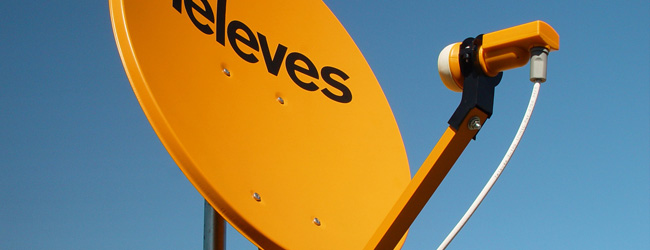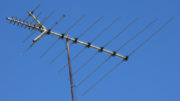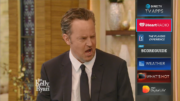Without a doubt, North America is the biggest paid satellite TV market. DIRECTV alone counts 24 million subscribers. However, if you were to look at all of Europe’s satellite services, it’s probably a bigger market than that. It’s impossible to know, though.
Most of Europe’s satellite TV services are free!
That’s right, most people in Europe can put up a satellite dish and get free TV, just like we do with antennas here in the US. There are paid services like SKY that offer a more DIRECTV-like experience for a fee, but if you’re in most European countries you can just put that satellite up and get several channels of live TV.
European countries can get away with this, and we can’t here in the US. In European countries, most TV broadcasting is either state-run or state-sponsored (much like PBS is here.) In Europe, there aren’t “network affiliates” that claim exclusive rights to their regions. Network programming is more national.
In fact, most European countries have moved to satellite for national programming instead of trying to cover the whole country with traditional TV broadcasts. It’s more economical to operate one satellite than a whole bunch of small towers. Large metropolitan areas still have broadcast TV, but in smaller areas, it just makes sense to go satellite only.
European satellite technology is mostly the same as…
The satellite services used in Europe are very similar to what we had here in the US fifteen years ago. In order to get satellite TV you put up a relatively small round dish with one LNB. You connect it to a satellite receiver and that’s about it. There aren’t really multi-satellite services, because they aren’t needed. Without thousands of local channels to worry about, most broadcasts fit on one satellite per country.
There are two types of LNBs used in Europe, though. Different satellites encode their signals differently. Most satellite broadcasting uses “circular polarization,” meaning the signal travels like a corkscrew. This makes the signal easier to get without super-precise aiming. Some satellites still use “horizontal polarization” which means the waves travel left and right through the air. This technology is still used on DIRECTV’s satellite for international programming, located in the 95-degree slot.
DIRECTV and DISH have evolved
DIRECTV has the exclusive license for satellite TV broadcasting in the 25-40GHz band, known as the “Ka band.” No one else uses these frequencies for satellite TV in North America or Europe. This is the number one reason that you can’t use a regular European satellite dish here.
Both DIRECTV and DISH use multiple satellites, and since no one in Europe does this you would have to use multiple dishes instead.
On the DISH side, they have started to move to the Hybrid LNB which is designed specifically to feed the Hopper 3, Wally, and Joey equipment. This one LNB makes it possible for Hopper 3 to provide 16 tuner-recording and it’s completely incompatible with standard European equipment.
So you’re telling me there’s a chance
There’s a misconception, though, that you can’t use a round dish for HD or 4K. This isn’t true and there’s plenty of HD programming overseas that uses a round dish. However in the US, the satellite providers have put HD on one satellite and SD on another. This requires a multi-satellite oval dish.
So there is a chance that you could use a Euro-spec dish here in the US, but it’s not a very good one. You would be limited to only the non-Ka-band broadcasts on one satellite at a time. This could mean you see only a few channels, and depending on your satellite provider you might get SD only.
If you’d like to know more about how satellite equipment from all over the world can be used here in the US, call our corporate and marine arm, Signal Connect, at 888-233-7563.





